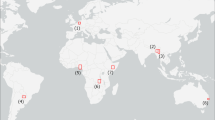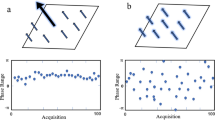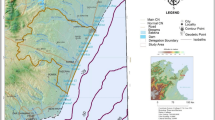Abstract
Land subsidence caused by natural or human factors is a very serious geological hazard. Ground buildings and environments are affected by land subsidence in some large cities and new economic development zones worldwide. The most direct cause of land subsidence are complex geological conditions and excessive mining of underground resources. It will have great significance for disaster prevention and controlling to understand the formation mechanism and evolution rule of land subsidence. In this research, the small baseline subset-interferometric synthetic aperture radar (SBAS-InSAR) was used to analyse land subsidence of Caofeidian in Bohai Bay, which could monitor the surface deformation velocity and displacement spatiotemporal evolution through the acquired SAR image dataset. A total of 43 sentinel images from January 2019 to December 2021 were used to calculate the time series of surface deformations. The results showed that there was an obvious subsidence deformation in the central and southern parts of Caofeidian, while the abnormal local subsidence was mainly reflected in the northern part. Geological conditions, groundwater exploitation and engineering disturbance were the main influencing factors of land subsidence. Combining the evolution results with the geological conditions, the surface deformation mechanism and subsidence mode in different regions of Caofeidian were concluded. Subsequently, the environmental effects and potential hazards were analysed. Our research proposed and established sequences of spatiotemporal evolutionary, analysis methods on mechanism and evolution of land subsidence, which is of great significance for regional disaster control.









Similar content being viewed by others
Data availability
The data used during the current study are available from the corresponding author on reasonable request.
References
Bayer B, Simoni A, Schmidt D, Bertello L (2017) Using advanced InSAR techniques to monitor landslide deformations induced by tunneling in the Northern Apennines, Italy. Eng Geol 226:20–32
Berardino P, Fornaro G, Lanari R, Sansosti E (2002) A new algorithm for surface deformation monitoring based on small baseline differential SAR interferograms. IEEE Trans Geosci Remote Sens 40:2375–2383
Bian X, Wang ZF, Ding GQ, Cao YP (2016) Compressibility of cemented dredged clay at high water content with super-absorbent polymer. Eng Geol 208:198–205
Cao C, Zhang W, Chen JP, Shan B, Song SY, Zhan JW (2021) Quantitative estimation of debris flow source materials by integrating multi-source data: a case study. Eng Geol 291:106222
Cui ZD, Yang JQ, Li Y (2015) Land subsidence caused by the interaction of high-rise buildings in soft soil areas. Nat Hazards 79(2):1199–1217
Dong SC, Samsonov S, Yin HW, Yin SJ, Cao YR (2013) Time-series analysis of subsidence associated with rapid urbanization in Shanghai, China measured with SBAS InSAR method. Environ Earth Sci 10:1083–1091
Du YJ, Jiang NJ, Liu SY, Jin F, Singh DN, Pulppara A (2014) Engineering properties and microstructural characteristics of cement solidified zinc-contaminated kaolin clay. Can Geotech J 51(3):289–302
Goldstein RM, Werner CL (1998) Radar interferogram filtering for geophysical applications. Geophys Res Lett 25:4035–4038
Hooper A (2008) A multi-temporal InSAR method incorporating both persistent scatterer and small baseline approaches. Geophys Res Lett 35(16):96–106
Hu B, Wang HS, Sun YL, Hou JG, Liang J (2014) Long-term land subsidence monitoring of Beijing (China) using the small baseline subset (SBAS) technique. Remote Sens 6:3648–3661
Kang Y, Lu Z, Zhao GY, Xu YK, Kin JW, Gallegos AJ (2021) InSAR monitoring of creeping landslides in mountainous regions: a case study in Eldorado National Forest, California. Remote Sens Environ 258:112400
Lanari R, Lundgren P, Manzo M, Casu F (2004a) Satellite radar interferometry time series analysis of surface deformation for Los Angeles, California. Geophys Res Lett 31:1–5
Lanari R, Mora O, Manunta M, Mallorqui JJ, Berardino P, Sansosti E (2004b) A small-baseline approach for investigating deformations on full-resolution differential SAR interferograms. IEEE Trans Geosci Remote Sens 42:1377–1386
Larson KJ, Basagaoglu H, Marino MA (2001) Prediction of optimal safe ground water yield and land subsidence in the Los Banos-Kettleman City area, California, using a calibrated numerical simulation model. J Hydrol 242(1–2):79–102
Leake SA (2004) Land subsidence from ground-water pumping. http://geochange.er.usgs.gov/sw/changes/anthropogenic/subside/. Accessed 6 Jan 2005
Li L (2017) Evaluation and analysis of water resources development and utilization in Caofeidian District of Tangshan City. Water Resour Dev Manag 5:20–23 (Chinese with English abstract)
Li YL, Yang JC, Hu XM (2000) Origin of ground fissures in the Shanxi graben system, northern China. Eng Geol 55(4):267–275
Li M, Ge DQ, Zhang L, Liu B, Guo XF, Wang Y (2016) Analysis of ground settlement and influactors in Caofeidian New Area based on psinsar technology. Land Resour Remote Sens 28(4):119–126 (Chinese with English abstract)
Li ZH, Wang Q, Zhou FJ et al (2021) Integrating an interferometric synthetic aperture radar technique and numerical simulation to investigate the Tongmai old deposit along the Sichuan-Tibet Railway. Geomorphology 377:107586
Liu XJ, Zhao CY, Zhang Q et al (2021) Integration of Sentinel-1 and ALOS/PALSAR-2 SAR datasets for mapping active landslides along the Jinsha River corridor, China. Eng Geol 284:106033
Mahmoudpour M, Khamehchiyan M, Nikudel MR, Ghassemi MR (2016) Numerical simulation and prediction of regional land subsidence caused by groundwater exploitation in the southwest plain of Tehran, Iran. Eng Geol 201:6–28
Pepe A, Lanari R (2006) On the extension of the minimum cost flow algorithm for phase unwrapping of multitemporal differential SAR interferograms. IEEE Trans Geosci Remote Sens 44:2374–2383
Shi GQ, Ma PF, Hu X, Huang B, Lin H (2021) Surface response and subsurface features during the restriction of groundwater exploitation in Suzhou (China) inferred from decadal SAR interferometry. Remote Sens Environ 256:112327
Wang WJ (2018) GNSS deformation monitoring solution precision influencing factors in Caofeidian. North China University of Science and Technology (MA thesis)
Wang ZF, Bian X, Wang YQ (2017) Numerical approach to predict ground displacement caused by installing a horizontal jet grout column. Mar Georesour Geotechnol 35(7):970–977
Wang YQ, Wang ZF, Cheng WC (2019) A review on land subsidence caused by groundwater withdrawal in Xi’an, China. Bull Eng Geol Environ 78:2851–2863
Wasowski J, Bovenga F (2014) Investigating landslides and unstable slopes with satellite multi temporal interferometry: current issues and future perspectives. Eng Geol 174:103–138
Xie ML, Zhao WH, Ju NP, He CY, Huang HD, Cui QH (2020) Landslide evolution assessment based on InSAR and real-time monitoring of a large reactivated landslide, Wenchuan, China. Eng Geol 277:105781
Xu YS, Ma L, Du YJ, Shen SL (2012a) Analysis on urbanization induced land subsidence in Shanghai. Nat Hazards 63(2):1255–1267
Xu YS, Ma L, Shen SL, Sun WJ (2012b) Evaluation of land subsidence by considering underground structures that penetrate the aquifers of Shanghai, China. Hydrogeol J 20(8):1623–1634
Yu QB, Wang Q, Yan XX, Yang TL, Song SY, Yao M, Zhou K, Huang XL (2020) Ground deformation of the Chongming East Shoal Reclamation Area in Shanghai based on SBAS-InSAR and laboratory tests. Remote Sens 12(6):1–21
Acknowledgements
This research was funded by the National Natural Science Foundation of China (41771550). Survey of basic scientific and technological resources (2019FY100605-2).
Author information
Authors and Affiliations
Contributions
Yuchao Li: project administration, formal analysis, writing–original draft, methodology. Xiaoyu Li: conceptualization, funding acquisition, review and editing.
Corresponding author
Ethics declarations
Ethics approval and consent to participate
Not applicable.
Consent for publication
Not applicable.
Competing interests
The authors declare no competing interests.
Rights and permissions
Springer Nature or its licensor (e.g. a society or other partner) holds exclusive rights to this article under a publishing agreement with the author(s) or other rightsholder(s); author self-archiving of the accepted manuscript version of this article is solely governed by the terms of such publishing agreement and applicable law.
About this article
Cite this article
Li, X., Li, Y. Study on land subsidence characteristics and deformation evolution mechanism in Caofeidian New Area, Bohai Bay. Bull Eng Geol Environ 82, 96 (2023). https://doi.org/10.1007/s10064-023-03121-7
Received:
Accepted:
Published:
DOI: https://doi.org/10.1007/s10064-023-03121-7




